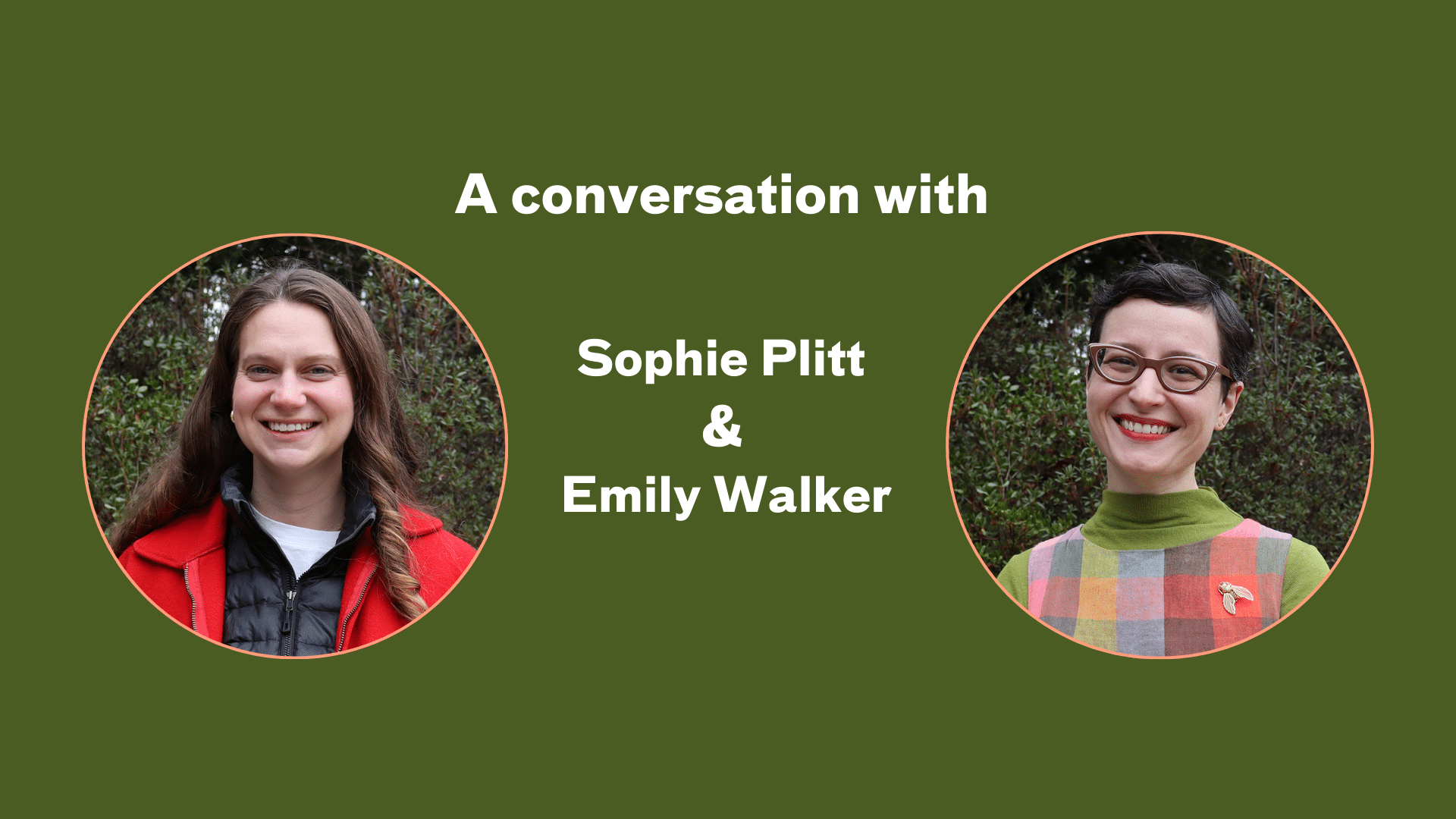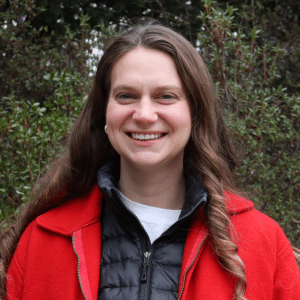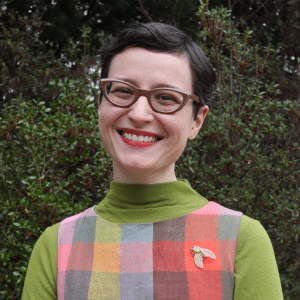How Can Cities Fund Forested Natural Areas?
By Natural Areas Conservancy on August 14, 2024

By Natural Areas Conservancy on August 14, 2024

A conversation with Sophie Plitt and Emily Walker of the Natural Areas Conservancy
The NAC released a new report, Funding the Care of Urban Forested Natural Areas, that looks at how 19 cities in our Forest in Cities network are funding their urban forests. The report investigates common challenges and obstacles, and highlights successful strategies to acquire funding for these natural areas.
We enlisted two NAC staff members to help break down the contents of the report—Sophie Plitt, the NAC’s Senior Manager of National Partnerships (and lead author of the report), and Emily Walker, our Senior Manager of External Affairs. Together they answer the big questions—Why fund forests? What is their value to cities? What resources are available to sustain them? How can individuals take action? Read on below for insight from these two advocacy and forestry practitioners.
The following interview has been edited for brevity and clarity.
If you’re interested in hearing more, listen to the full 20-minute audio interview:
EW: Let’s dive in. My first question for you, Sophie, is I would love to hear your thoughts on what are the benefits that urban natural areas provide and how do they differ from other parts of the urban forest?
SP: So urban forests function as critical pieces of infrastructure in our cities, and they contribute meaningful public health and environmental benefits to everyone living in cities. Forested natural areas, which are those spaces in the urban landscape that really look and feel like the woods, can provide benefits at higher rates than other parts of the urban forest. They provide incredible cooling effects on hot days, and they also provide critical habitat for native plants and animals and safeguard biodiversity in our fragmented urban environment.
They also mitigate the impacts of climate change by doing things like absorbing carbon dioxide and storing it in their leaves and wood and absorbing stormwater. They provide incredibly important access to urban nature. We’ve actually found that a lot of the folks who are visiting our forests and natural areas, that’s one of their only sources of nature. So these spaces are incredibly important for both of those ecological and social benefits.
EW: That all sounds fantastic. One would think hearing all of those benefits laid out, that these would be a really robustly funded part of our public open space network. But our report found that that’s not necessarily the case. So I would love to know from your perspective, what are some of the primary challenges that are faced in funding the care of our urban forested natural areas and kind of a secondary question like how do those challenges impact the management and preservation of these spaces?
SP: We worked with cities all across the U.S. to look at how these spaces are funded and unfortunately found that they are consistently underfunded and often not able to perform the critical management functions that keep these forests accessible and thriving. Less than 4% of municipal park budgets on average are dedicated to caring for natural areas, despite them often making up at least half of total parkland acreage in a given city.
Why is this happening? We found that both the public and the private sector often prefer to fund one time investments or capital improvements like tree planting, rather than really investing in long term multi-year maintenance. And urban forests are unfortunately often seen as undeveloped land, a place where you could build a shopping mall, a parking lot, a ball field.
Emily, I’m going to turn to you and your policy and funding expertise here in the context of New York City. What are some of the potential funding sources for urban forested natural areas?
EW: It’s a great question. In New York City, one of the funding sources we rely on heavily comes from municipal funding and primarily the expense budget for the city of New York. But to your point earlier, a lot of this is about preserving the canopy that we have and that takes people, power, and resources that come from the expense budget. That’s often a challenge to get the funding we need for that. There’s also state and federal grants that can be pursued for this work, but those tend to be one-time infusions of funding and it can be kind of an onerous process. Last year, we had the Inflation Reduction Act, which was a really significant moment. There was funding that came through the U.S. Forest Service through the Community and Urban Forestry program, which was great. But again, there was a lot of need expressed in the applications that were submitted, and most projects didn’t receive funding at all.
Here on the state side in New York we have the Environmental Bond Act, which is really exciting. But one of the constraints of that is that it’s capital funding. It will go towards new tree plantings, but not really the maintenance.
I would love, Sophie, to hear about what are some of the possible approaches that cities can take to address this underfunding of our urban forested natural areas?
SL: Absolutely. One of the most important approaches we can take to bringing more funding to forested natural areas is really through building partnerships and communicating the importance of natural areas to those partners and decision makers. This starts with data and science and being able to quantify and highlight all of those incredible social and ecological benefits.
One of the most important approaches we can take to bringing more funding to forested natural areas is really through building partnerships and communicating the importance of natural areas to those partners and decision makers.

We need decision makers in our communities to understand what it takes to protect and keep these forests healthy and thriving and what that costs and where that funding is going to go, to really preserve the integrity of forests over time. The second approach is really building relationships with philanthropic communities and bringing more private monies into natural areas conservation in cities. And finally, exploring more innovative financing options like carbon credit markets that might provide a new source of funding that can be directed towards critical forest management and acquisition efforts.
EW: That’s exciting. To put this in context, we know that in recent years the overall budget for NYC parks across every division—the entire pie for the parks budget — has been hovering around 0.6% of the entire city operating budget, which is not a lot. Drilling down into the parks budget itself, the amount of funding that’s going toward forest management is about 0.7% of the entire operating budget for parks.
Setting the table and knowing everything we know about how little has been funded in New York City, what are some of the lessons that you think other cities that aren’t New York can bring to bear?
SL: One example that I want to share with you is from the city of Portland, Oregon. Back in 2019, after over a year of public outreach and really building on a legacy of partnerships with local conservation partners, the Portland Metro Council put forth a local ballot measure that Portland residents voted on—a parks and nature bond with provisions for 25 years of funding and totaling 475 million in general obligations bonds. We were thrilled to hear that in 2019 and 2020 that this bond passed with a 60% majority and they now have millions of dollars to allocate to urban natural areas.
EW: That’s amazing!
SL: Emily, I’m curious, what are some ways that you think every everyday residents of cities could help move this work forward and help advocate for more funding?
EW: I love this question and I feel so inspired hearing what you shared about what’s happening in Portland. I think it’s really fantastic when cities have the ability to put these efforts out to the public in a way that both educates the public about the need and gives them context.
Because I think municipal budgets are really wonky and it’s not something that we’re really taught as citizens of our cities to really understand. I’m a big proponent of, if you want to see change happen in your community, start from the ground up. First and foremost, I recommend that anyone try to understand how your city functions. How does it make budget decisions? What is that time frame cycle? And when are those key moments when you, as a member of the public and as a taxpayer, can say your piece?
I'm a big proponent of, if you want to see change happen in your community, start from the ground up. First and foremost, I recommend that anyone try to understand how your city functions. How does it make budget decisions? What is that time frame cycle? And when are those key moments when you, as a member of the public and as a taxpayer, can say your piece?

Connecting with your local elected officials is really key. They need to hear from us about what we think our priorities are. The more we engage in that process, the more that folks who win these seats have to pay attention to the issue and understand that it’s a priority. It really starts with constituents not being afraid to speak up to those who are in power, because they work for us.
SL: That’s really well-put, Emily, and feels really inspiring for you to state it in such a powerful way. It makes me want to ask our final question here— what makes you feel most optimistic about the future of forested natural areas?
EW: I think when I consider this question, what comes to mind for me is stewardship and just seeing people come out into parks and the urban forest more. The pandemic highlighted just how important and critical parks and open space are.
I remember seeing so many articles about people being stunned by the bird song they could hear at the beginning of the pandemic. That reconnection with nature that a lot of us who live in cities need, is really important. Because people started to appreciate that, they started to figure out ways that they could help. And I think that’s something that’s really exciting and I hope will continue.
SL: I think one thing I’m noticing is as climate change is becoming more and more apparent in our daily life, like extremely hot summers, more frequent and severe storms, more flooding—obviously, those things don’t make me feel very optimistic— but the fact that people are really seeing the impacts that nature and natural areas have as a solution to climate change, has been really inspiring. I hope we continue to really leverage that message and elevate our natural areas in cities as one of our most powerful solutions to climate change.
EW: It’s always a pleasure to talk shop with you, Sophie.
SL: Same here, Emily, great conversation. And here’s to bringing some more funding to our city’s vital natural areas!
Read the full Funding the Care of Urban Forested Natural Areas report.